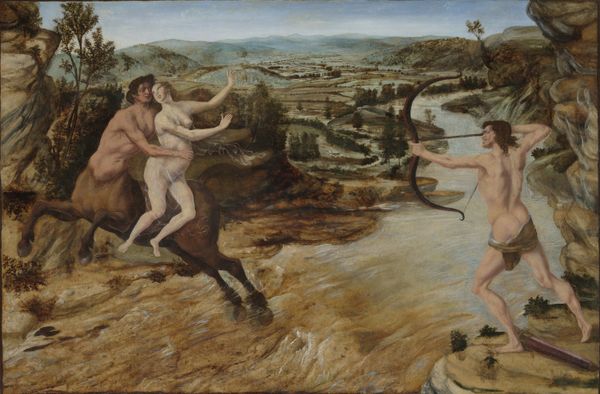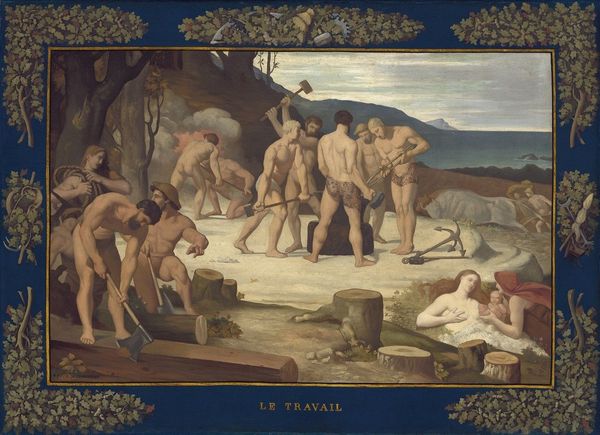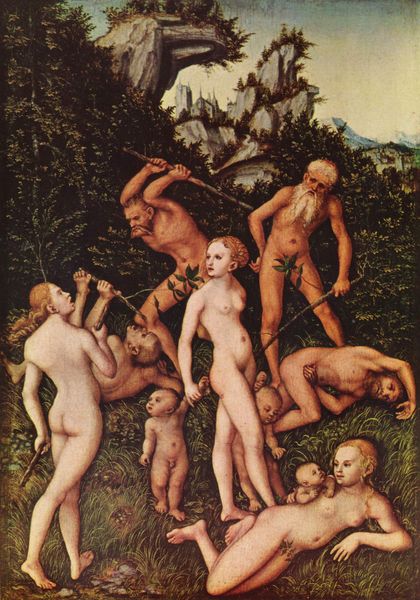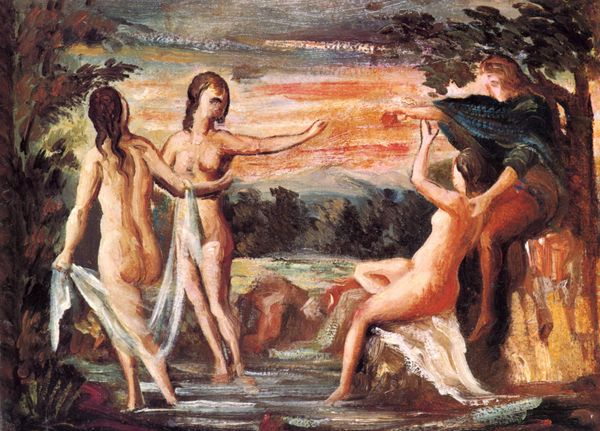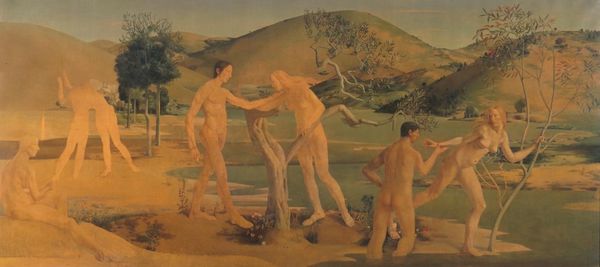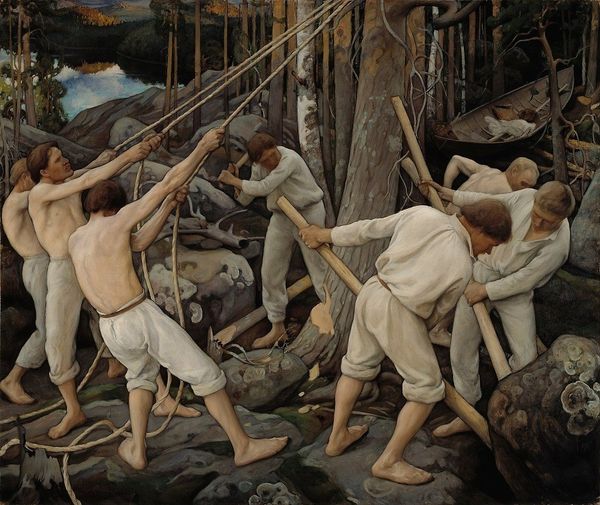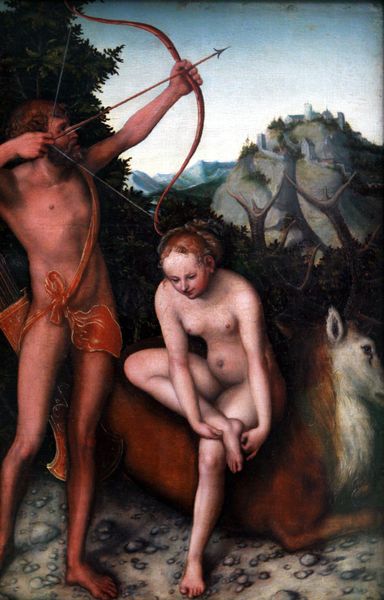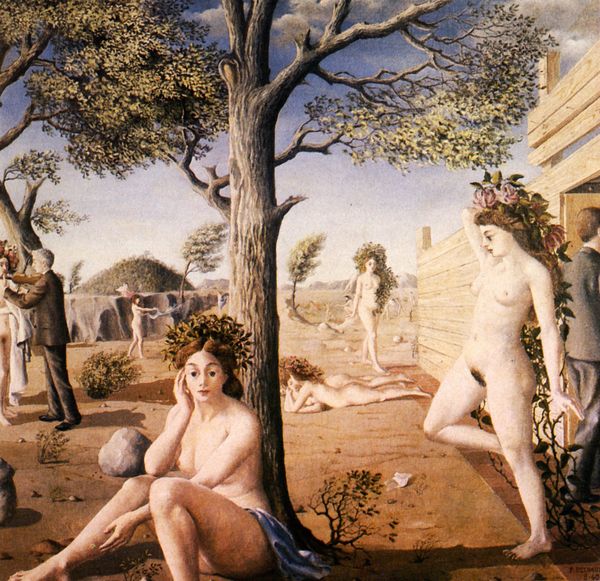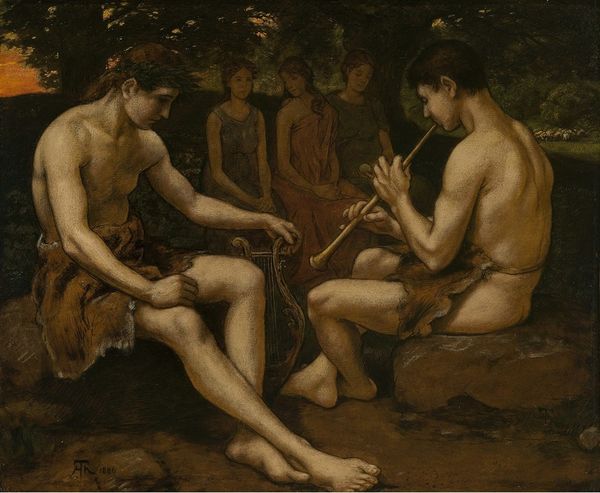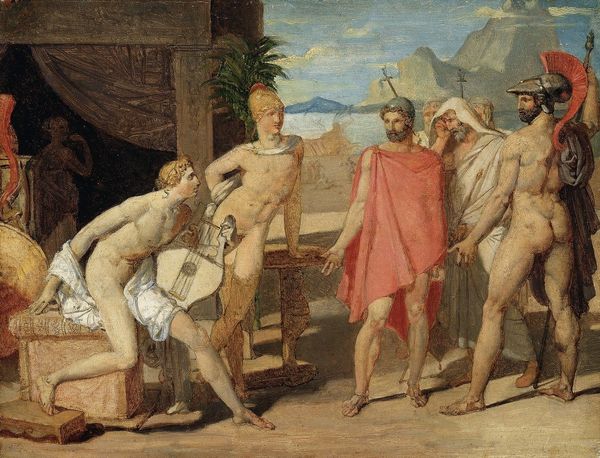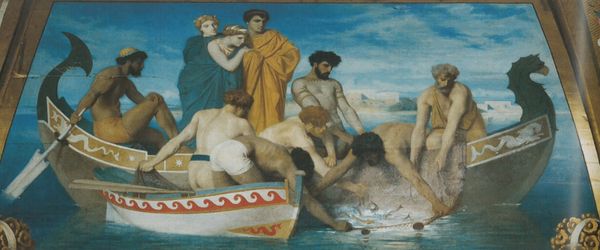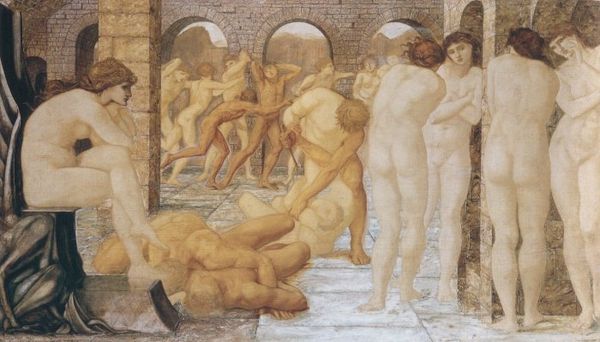
oil-paint
#
portrait
#
allegory
#
oil-paint
#
landscape
#
oil painting
#
group-portraits
#
mythology
#
human
#
painting painterly
#
history-painting
#
academic-art
#
nude
#
watercolor
Copyright: Public domain
Pierre Puvis de Chavannes’ painting, “Work,” is held at the Musée de Picardie in Amiens, France. Though undated, it reflects the academic style and symbolist influences typical of the late 19th century. At first glance, the painting presents an idealized vision of labor and classical male nudes set against an allegorical landscape, reminiscent of a bygone, possibly classical, era. But there are gendered undertones that we can explore: the men engage in overtly physical labor, forging metal, and chopping wood. In contrast, in the foreground, a woman nurses a child, embodying a traditional role of nurturing. The depiction is not just about the division of labor, but it speaks volumes about societal expectations and the gendered identities of the time. The artist seems to be positioning these activities as foundational to society itself. It's not merely the representation of work, but the symbolic value and cultural significance assigned to it. How do we reckon with the artist's vision of labor and gender in our contemporary moment?
Comments
No comments
Be the first to comment and join the conversation on the ultimate creative platform.
